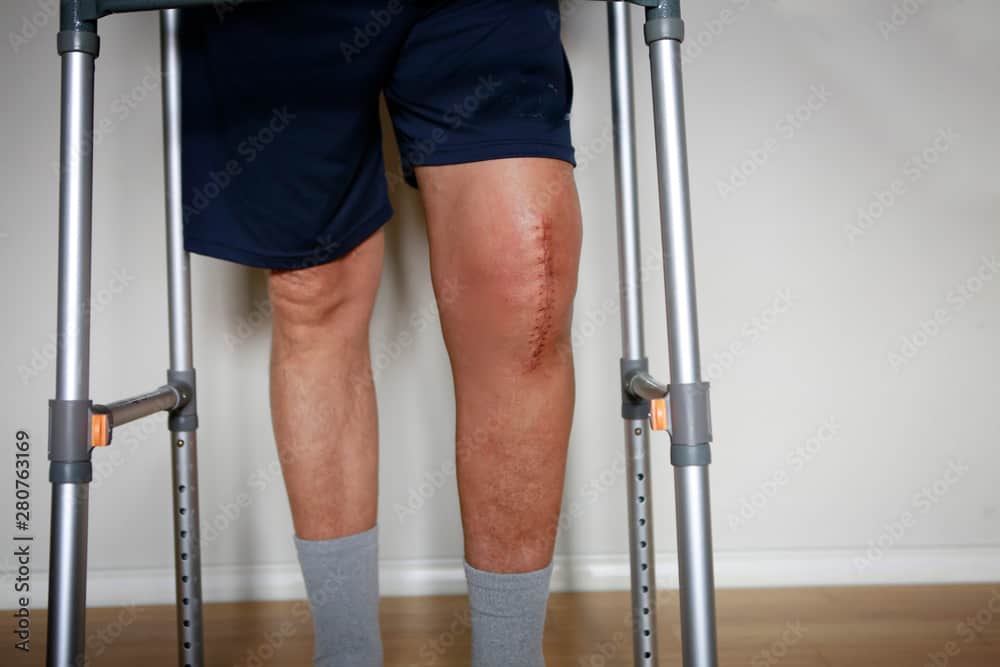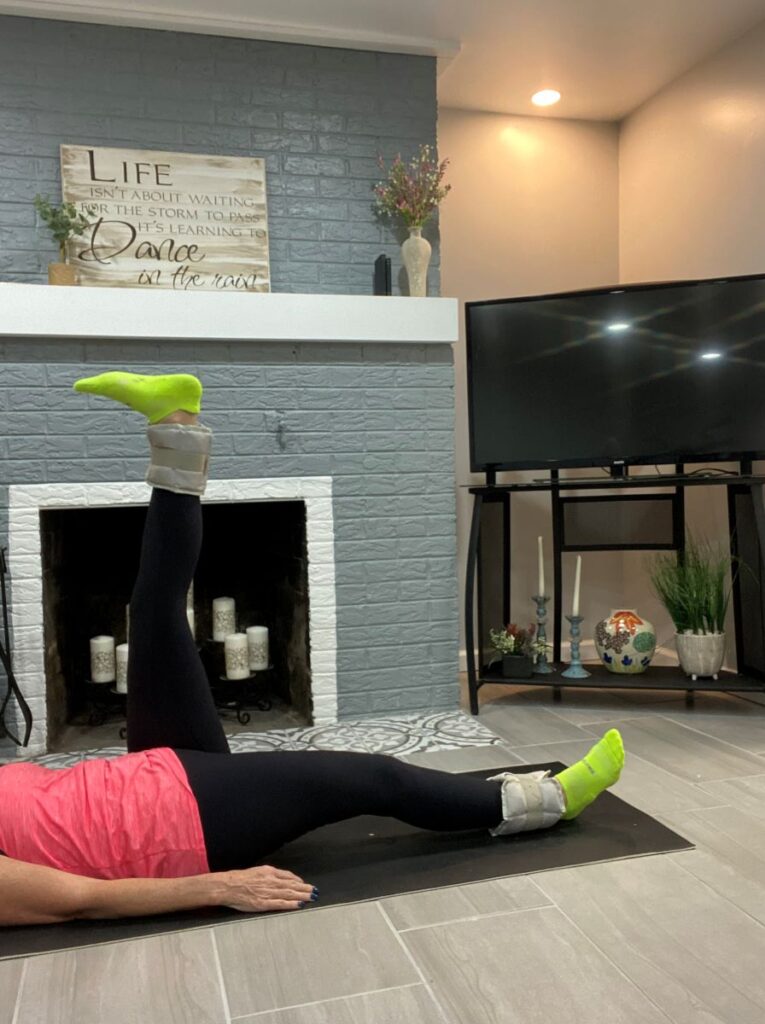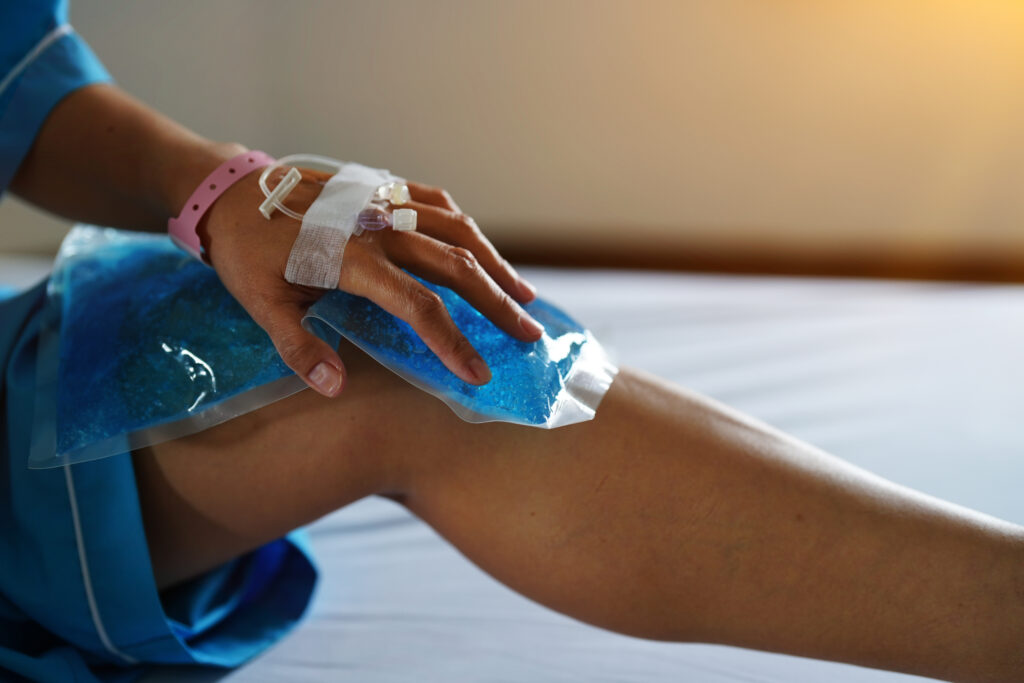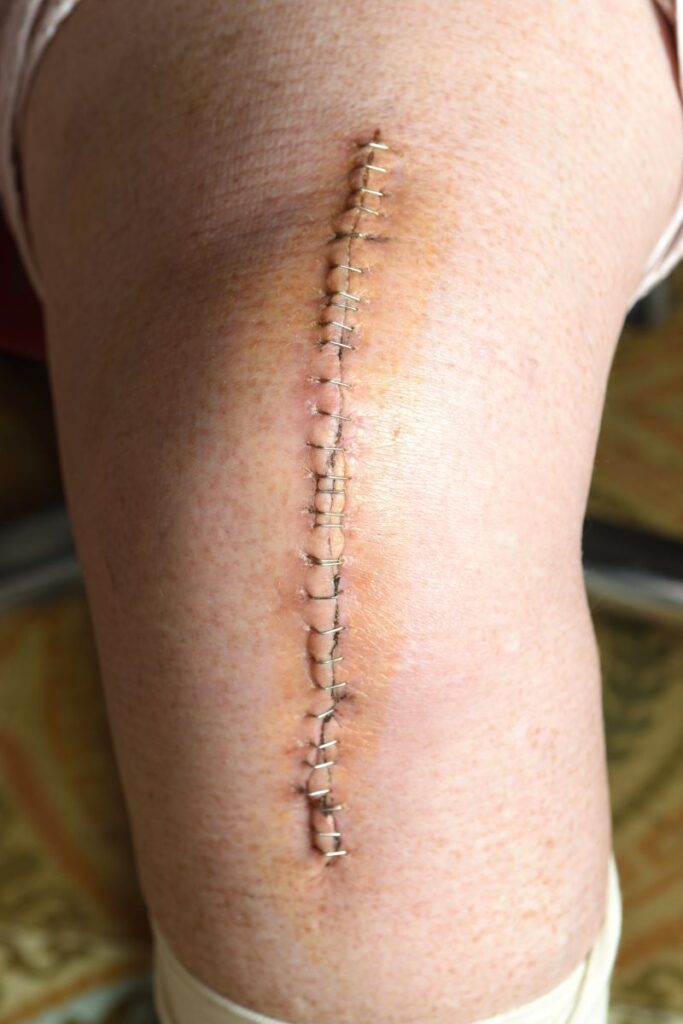14 Tips for What NOT to do After Total Knee Replacement
It’s undeniable that knee replacement surgery is life-changing.
I know that it was for me!
Getting a total knee replacement can be an exciting step towards regaining your mobility and active lifestyle. Still, it’s important to understand the limitations of your new joint right after surgery.
During my recovery from knee replacement surgery, I found several things that you should absolutely not do in order to get back to your usual activities as quickly and safely as possible.
Here are the 14 things I learned not to do after knee replacement surgery so that I could safely return to my favorite activities.

What Not To Do After Total Knee Replacement
1. Don’t Put Too Much Weight on Your Joint Right Away
After your knee replacement, putting weight on your new knee will be very difficult because you will have significant pain and swelling.
For the first few weeks after surgery, you will need to walk with assistive devices, like a walker, cane, or crutches.
Once you’re able to bear full weight on the leg and walk safely—usually around 2-4 weeks post–op—you can ditch the assistive device.
2. Don’t Skip Physical Therapy.
It’s important to start moving your knee as soon as possible after surgery to prevent stiffness and swelling and help with the healing process.
The first 8 weeks of therapy are the most important.
If you don’t regain as much range of motion as possible during that time, it will be more challenging to get it back later.
Therefore, skipping your scheduled physical therapy is one of the most important things you should not do after your total knee replacement.
Your physical therapist will help you regain the strength and mobility of your new knee joint so that you can return to your everyday activities!
3. Don’t Neglect Your Home Exercise Program
You will never be able to regain all of your motion and strength by only doing a physical therapy program 2-3 times a week.
You will need to work hard at home as well.
So, in addition to a physical therapy program, your physical therapist will instruct you on specific exercises to do at home.
They will be uncomfortable, and some will be downright painful at first, but trust me, they will get you moving faster.
Just in case you’re wondering – your therapist will know if you are dogging your home program because your recovery will be delayed.
So, just suck it up and get it done!

4. Don’t Forget To Take Pain Medication As Ordered.
You’re going to be in severe pain at first, and it’s important to take your medication as ordered in order to stay comfortable and avoid complications.
Don’t try to be a hero and tough out the pain after surgery, it will only become more severe and harder to get back under control.
I personally am not one to take pain medication, and I really tried to avoid it altogether.
Unfortunately, the pain got ahead of me a few times and caused me to have to pull back on my therapy.
Once I returned to taking my medication a few times a day, I was able to push myself and do the exercises again.
Don’t be like me – it sucks!
5. Don’t Forget To Ice Your Knee Often.
Ice, ice baby!
This was my best friend after surgery.
Most of your pain may be due to swelling in the knee.
If you don’t keep the swelling under control, advancing in therapy will be difficult.
You should ice your new knee joint for 20 minutes, several times a day.
This will help to reduce swelling and pain, which in turn helps to reduce the need for more pain medicine, which is a huge plus!
So, grab your ice packs or ice machine and elevate your lower leg while you rest!

6. Don’t Forget to Elevate Your Leg
Elevating your leg above the level of your heart is extremely important.
This will help to keep the swelling down.
Decreased swelling = decreased pain!
So, gather up your pillows, find your comfy recliner, couch or bed and elevate that leg while you rest.
7. Don’t Forget to Get Plenty of Rest and Sleep
This may be hard for the first few days, but do your best to get plenty of rest.
It is super important for a successful recovery.
So, find your comfy place – your recliner, couch, or bed and take time every few hours to lie down, elevate your leg, and rest.
It will be difficult at first to get a good 8 hours of sleep at night, so don’t be afraid to take naps for the first week or two.
READ MORE: How To Get The Best Sleep After Knee Replacement Surgery | Simply Aging Healthy
8. Don’t Forget About Your Diet!
Sticking to a bad diet plan is one of the things you should not do after knee replacement surgery.
It will be very important to watch what you eat and drink while recovering from your surgery.
Be sure to increase your protein and water.
It will be extremely helpful with wound healing and keeping you hydrated.
If you become dehydrated, it can cause confusion, dizziness, muscle cramping, and fatigue, which can increase your fall risk.
Also, avoid overeating. You will not be as active, so you could possibly put on some weight, which can cause more pressure on your new knee.
9. Don’t Neglect Your Wound Care
It’s important to keep your surgical wound clean and dry.
You should shower regularly and use a mild soap on the incision site.
Avoid soaking your knee in a tub or swimming pool until your wound has healed.

10. Don’t Ignore Warning Signs of Complications
While most people recover from knee replacement surgery without any problems, some issues can occur, like infection, increased risk of blood clots, or loosening of the implant.
It’s important to be aware of the warning signs of these complications and contact your orthopedic surgeon immediately if you experience any of them.
11. Don’t Sit Or Stand For To Long
Sitting for long periods of time can cause stiffness in your new joint.
It is important to get up and take a short walk every few hours in order to keep your joint mobile.
Avoid sitting in low chairs or soft chairs. These can cause difficulty with standing and sitting.
Standing for long periods can also cause stiffness after knee surgery.
If you must stand for long periods of time, try walking short distances instead of standing in one spot.
Make sure to take breaks often and prop your leg up when possible.
12. Don’t Wear Unstable Shoes
Wearing the wrong shoes can be very dangerous after a total knee replacement surgery.
If you wear slides, slippery shoes, or shoes with heels, this could cause a fall or increased pain in your knee.
Choose non-slip athletic shoes – this will be helpful when doing your therapy and while using assistive devices.
You will be able to get back to wearing your cute, cool shoes soon, but keep them in the closet for now!
13. Don’t Drink Alcohol In Excess.
First off, it’s best to avoid alcohol altogether while still on pain medication; this can be very detrimental to your overall health.
You will also have balance issues at first, and being a little tipsy may not be a good idea.
The last thing you want is to fall on your new knee.

14. Don’t Put Off Follow-Up Appointments
It’s important to see your orthopaedic surgeon for follow-up appointments so they can check on your progress and make sure everything is healing correctly.
Be sure to keep all your appointments and call your surgeon if you have any concerns.
Knee Replacement Recovery Tips
Total knee replacement surgery can be the best way to get back to your daily activities and a regular exercise program.
However, it’s important to take the recovery process seriously.
It can take weeks to months before you get back to normal after such a major operation. But by taking small steps every day in your recovery, you will get back to your active lifestyle.
You should listen to your doctor’s medical advice and do only what you are cleared to do.
Avoid high-impact activities that include jarring, pounding, and twisting movements because it will put too much stress on your knee.
Following the prescribed physical therapy exercises, taking your pain medicine if needed, and proceeding cautiously with any new activity are all key things for a successful post-surgery recovery.
Taking extra care of yourself during recovery can make all the difference in avoiding complications.
At the same time, being educated on what not to do after a knee replacement can help you stay on track for long-term success.

Just one question: how long after the operation can you drive?
I was 4 weeks post op when I started driving but I had the left knee replaced so it wasn’t as bad as if it was my driving leg. Just make sure that you are completely off of pain medication!
I Have ITB after FKR. Almost 5 months ago . It hurts and stiffness does not go away. Now I am in a rehabilitación for this.
Still not able to ride my bike it’s been 2years just can’t get the full range of motion.